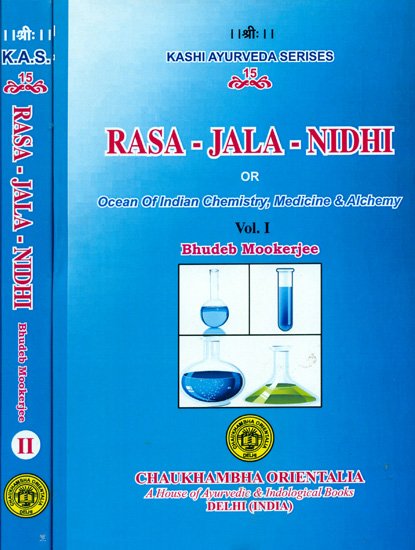Rasa Jala Nidhi, vol 2: Minerals (uparasa)
by Bhudeb Mookerjee | 1938 | 28,803 words | ISBN-10: 8170305829 | ISBN-13: 9788170305828
This second volume of the Rasa-jala-nidhi deals with the purification, incineration and medicinal uses of various minerals (uparasa), as well as preventing faults due to misuse. It is continued in the third volume which deals with the various metals. The Rasa-jala-nidhi (“the ocean of Iatrochemistry, or, chemical medicine) is a compendium of Sansk...
Part 4 - Characteristics of Sasyaka (blue stone, found in nature)
It has the colour of the neck of a peacock, The difference between tuttha and sasyaka lies in the fact that tuttha is prepared in the laboratory, whereas sasyaka is a mineral found in nature. In the absence of either of these two, the other may be used.
Qualities of sasyaka.
It is a remover of an abnormal excess of the three doshas. It is efficacious in poison, heart disease, colic, piles, leprosy, amla pitta (dyspepsia with acidity and an abnormal excess of pitta), constipation, leucoderma, and toxin. It also cures and prevents senal decay. It causes vomiting and purgation.
Conclusion:
 This concludes ‘Characteristics of Sasyaka (blue stone, found in nature)’ included in Bhudeb Mookerjee Rasa Jala Nidhi, vol 2: Initiation, Mercury and Laboratory. The text includes treatments, recipes and remedies and is categorised as Rasa Shastra: an important branch of Ayurveda that specialises in medicinal/ herbal chemistry, alchemy and mineralogy, for the purpose of prolonging and preserving life.
This concludes ‘Characteristics of Sasyaka (blue stone, found in nature)’ included in Bhudeb Mookerjee Rasa Jala Nidhi, vol 2: Initiation, Mercury and Laboratory. The text includes treatments, recipes and remedies and is categorised as Rasa Shastra: an important branch of Ayurveda that specialises in medicinal/ herbal chemistry, alchemy and mineralogy, for the purpose of prolonging and preserving life.
